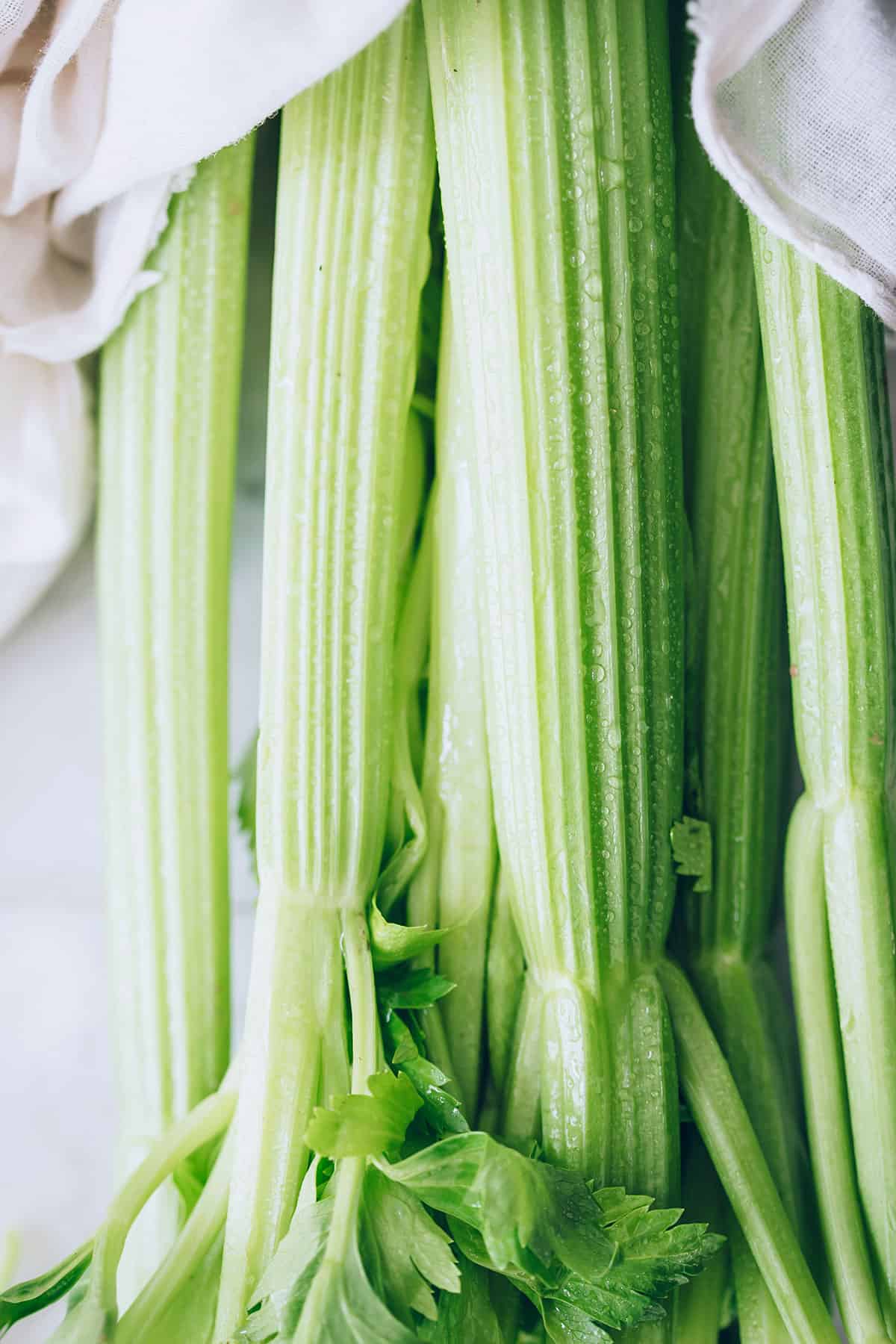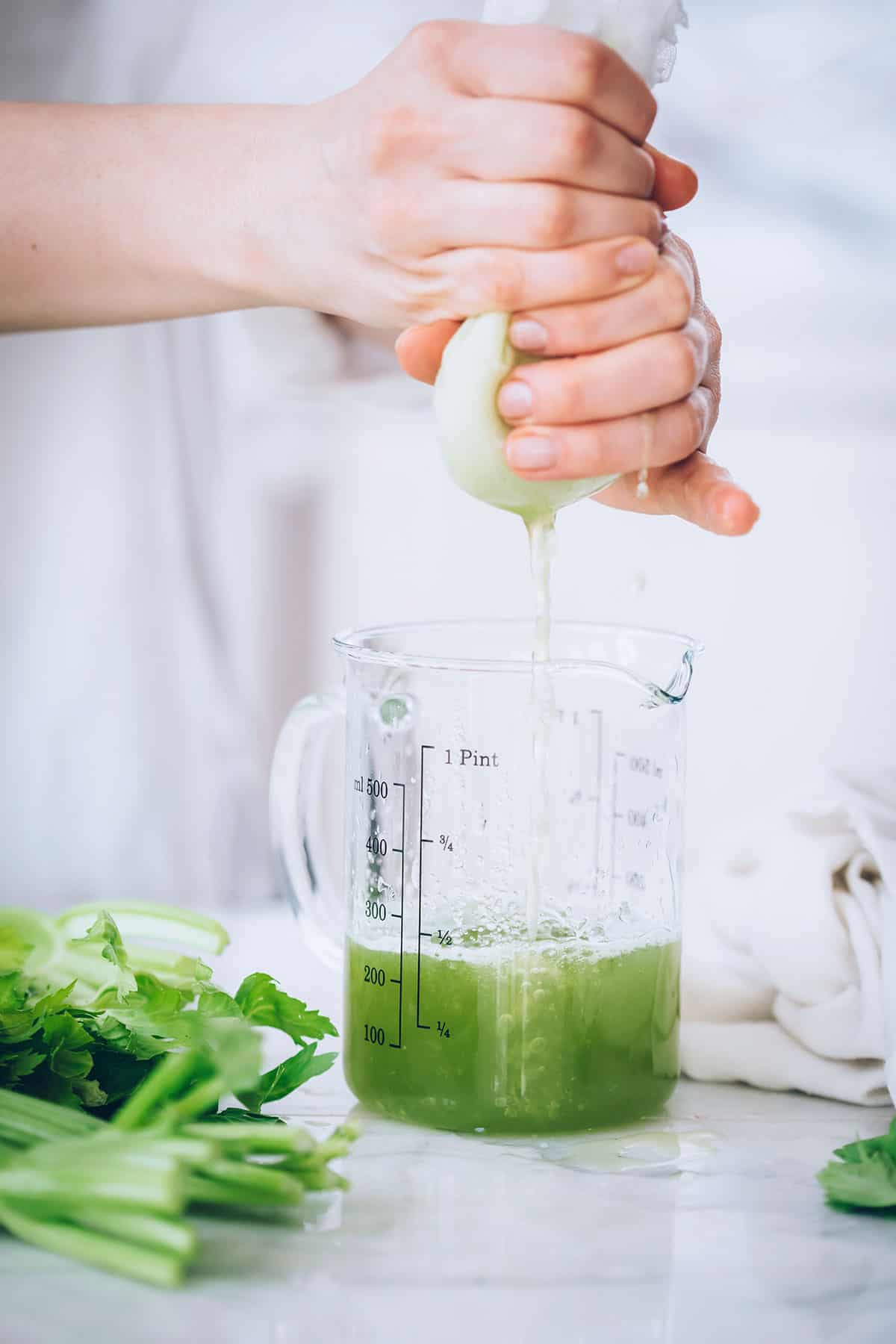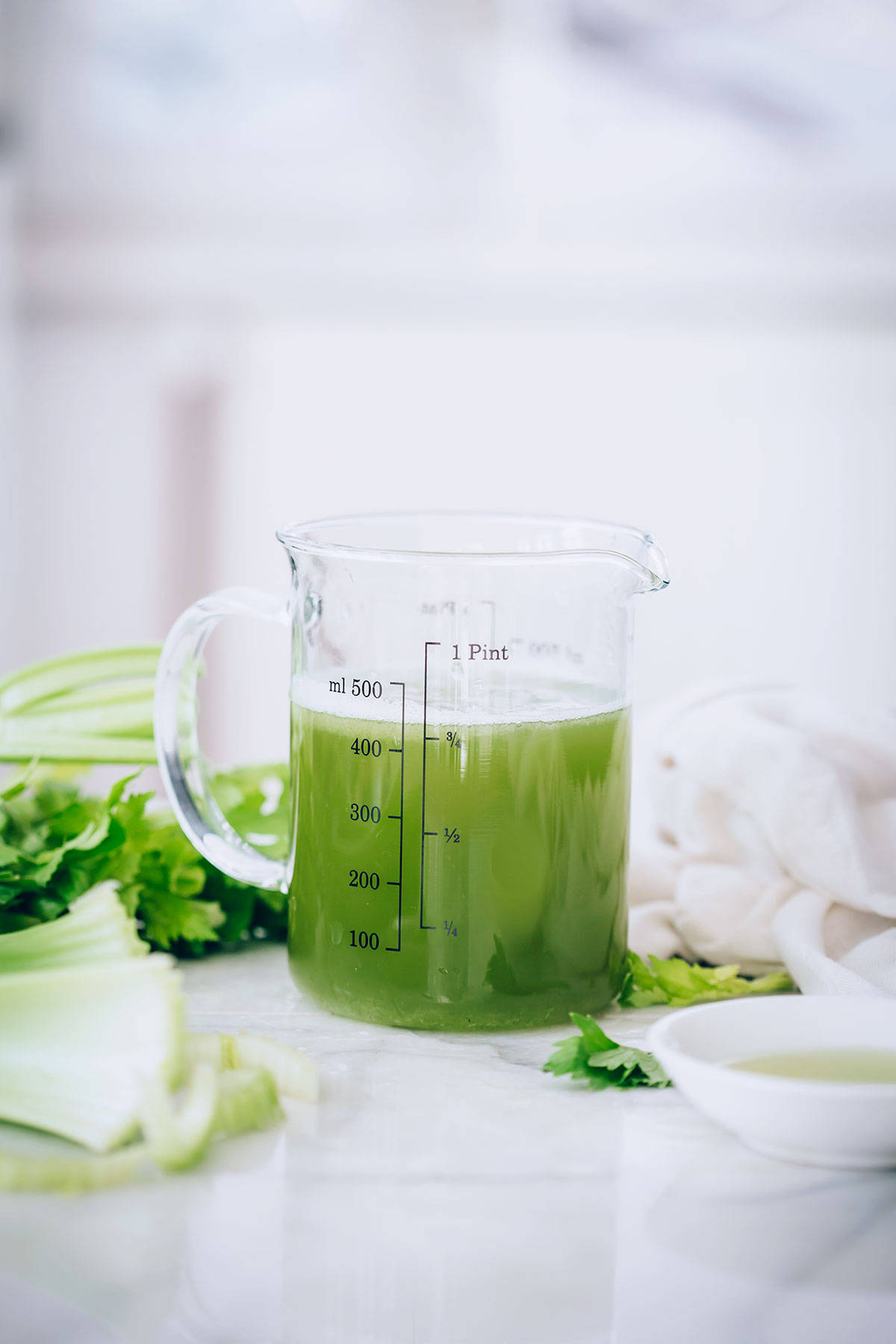Is everyone you’re following on Instagram raving about how celery juice has cured all their health woes? Just search #celeryjuice on Instagram, and you’ll see what I’m talking about (350k posts and counting).
If you’ve been wondering whether you should jump on the bandwagon, today’s post will tell you everything you need to know about celery juice benefits and whether this trend deserves a place in your diet!
Celery juice, what?
The celery juice craze was started by Anthony William, aka the Medical Medium, who says it is “one of the most powerful and healing juices we can drink. Just sixteen ounces of straight celery juice can change somebody’s life.”
It’s claimed that in just one week, you will restore natural stomach acid production, improve digestion, reduce inflammation, improve autoimmune disease, starve bad bacteria, flush out viruses, balance your body’s pH, detox your liver, clean your blood, hydrate on a deep cellular level, eliminate migraines, reduce anxiety and panic attacks, and reverse brain fog, depression, and anxiety. That’s one impressive green drink!
To really reap the benefits of celery juice, William suggests that celery be juiced (no pulp), consumed on its own (no lemon, ice, etc.) and on an empty stomach first thing in the morning at least 30 minutes before breakfast.
What’s so special about celery?
Despite being considered a boring veggie for many years (isn’t it just crunchy air?), celery is actually very nutrient-dense. It’s low in calories, high in fiber and water, and rich in vitamins and minerals such as vitamin K, vitamin C, beta carotene, folate, calcium, magnesium, sodium, and potassium.
What’s most impressive about celery is its phytochemical content. It is known to be an incredibly powerful antioxidant [source]. Specifically, celery contains a wide variety of antioxidant polyphenols, which prevent cellular damage by neutralizing free radicals, boosting the immune system, modulating inflammation, and protecting against disease [source].
So celery’s newfound “celeb status” is well-deserved based on the fact that it is loaded with beneficial micronutrients and phytochemicals that are the foundation of a health-promoting diet. It contains anti-inflammatory properties, lowers blood pressure [source], has been shown in studies to lower serum lipids [source] and glucose levels in pre-diabetics [source], and it was even shown to protect the stomach lining from ulcers in animal studies [source].
But the question still remains….
Is there any science to verify celery juice’s magical powers?
In short, no. While there is substantial research supporting the health benefits of celery extract (which concentrates the phytochemicals), there isn’t much to support all the claims being made about celery juice itself.
But there are thousands of people who aren’t waiting around for research to verify all the benefits before starting their day with a big cup of celery juice! The anecdotal evidence is pretty compelling—even if it is placebo! So my take is that if it fits with your lifestyle and makes you feel good, there’s no harm in jumping on the bandwagon. Especially if it means you’re replacing, say, your morning donut with vegetable juice—that’s a huge upgrade!
It’s also important to realize that, when it comes to a healthy diet, no one food in isolation can provide everything we need for optimal health. Celery juice can be a healthy adjunct to an already nutrient-dense whole food diet but not a get-out-of-jail-free card for eating junk the rest of the day.
What about the fiber you’re missing out on?
When you juice a vegetable, you’re basically concentrating the nutrients into a sippable form, thus bypassing the energy-intensive process of digestion. But you’re also throwing away the pulpy residue that contains all the fiber.
Your good gut bugs love and need fiber [source], so celery juice shouldn’t be your only veggie for the day. You can have a glass of celery juice in the morning but still aim to get in 8–10 servings of fruits and vegetables in their whole food form.
Bottom line on celery juice benefits
I hate to burst your bubble, but there is nothing especially magical about celery. Celery is good for you. If juicing celery makes you feel amazing, go for it! If it’s all too much trouble, just eat it. Use it in soups, make ants on a log for a snack, and add it to smoothies.
Celery is just one of the many phytochemical-rich and nutrient-dense veggies [source]. Vegetables are awesome. But what is magical is consuming a vegetable-heavy whole foods diet and, if celery juice is a part of that, by all means, keep it up!
How to Juice Celery
If you’re interested in giving celery juice a try, here are a few tips:
Choose organic – celery is on the “Dirty Dozen” produce list [source], which means that conventional celery is among those most likely to be contaminated with pesticide residues.
It is best to drink the juice immediately after preparing it to reap the most benefits.
A large bunch of celery typically yields 16 ounces of juice when using a juicer. I recommend a masticating juicer, which keeps the veggies at low temperatures to preserve the vitamins and enzymes that can be destroyed by heat.
If you don’t have a juicer, you can use a high-powered blender, like a Vitamix. See the recipe below!
How To Make Celery Juice
Ingredients
- 1 head of organic celery
- Splash of filtered water
Instructions
- Wash and roughly chop the head of celery into chunks.
- Add the chunks to a blender along with a splash of water.
- Blend until smooth.
- Pour into a large bowl through a nut-milk bag.
- Squeeze the juice through the bag into the bowl.
- Drink the juice immediately for the most benefits.
- Compost the residual pulp, if possible!




Leave a Reply